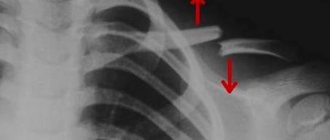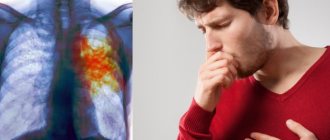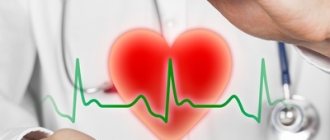Often we are faced with poor health and try to understand what is the cause of this condition. And when many laboratory and instrumental tests have already been carried out and nothing has been found, we think: “What could this be connected with? Because I really feel bad.” If there are no organ damage, it’s time to consult a neurologist. Autonomic dystonia syndrome, autonomic failure, autonomic crises are neurological diseases that we will touch on in this article.
The essence of the syndrome and features of its appearance
The nervous system has a structure consisting of somatic and autonomic components.
The first is responsible for motor reactions that arise under the influence of external factors. The vegetative part is involved in the work of internal organs, blood vessels and glands, which is described in scientific articles about VSD and the websites of clinics licensed to treat it. The autonomic system is usually divided into sympathetic and parasympathetic fragments. The first part is responsible for increasing activity and stimulating metabolism. This leads to increased tissue excitability. The parasympathetic system restores the body and regulates its functions during sleep.
They are distinguished by synchronous recovery. However, under the influence of external conditions, a dominant is formed, and a predominance of a certain department is observed. Mental adaptation is disrupted, the emotional state suffers.
Vegetovascular dystonia (VSD) is a combination of manifestations that appear when there are interruptions in the functioning of the autonomic part of the nervous system. The disease causes various abnormalities in the functioning of internal organs.
This syndrome has different names - neurocirculatory dystonia, autonomic dysregulation, autonomic neurosis, neurasthenia.
Panic attacks with VSD
VSD and panic attacks are considered completely different conditions. Many patients confuse these diseases because they differ in other similar symptoms. During an attack of dystonia and at the time of a panic attack, a release of adrenaline, norepinephrine, and acetylcholine occurs (observed in the sympathetic form). Therefore, many experts diagnose people with a tendency to panic attacks as VSD.
This conclusion is considered erroneous. To eliminate vegetative-vascular dystonia, it is necessary to take medications, and the treatment of panic attacks is carried out using psychotherapy methods.
It is easy to confuse VSD and a panic attack. Experts in the post-Soviet space practically do not diagnose panic attacks. They are treating the disease. To eliminate the symptoms of panic attacks, you do not need to take medications.
To stabilize blood pressure parameters, to combat headaches and pathologies in the heart area, the help of a psychotherapist is needed. This deviation is a neurosis. Vegetative vascular dystonia is considered a deviation of the autonomic nervous system. This condition requires the use of medications.
Causes and predisposing factors
The causes of VSD remain the subject of debate. These are due to differences in opinion about what the syndrome itself is. A number of doctors perceive vegetative-vascular dystonia as a consequence of diseases of any organs. The appearance of symptoms of vegetative-vascular dystonia is explained by secondary disturbances in nervous regulation against the background of the existing disease. For example, with cardiac manifestations of VSD, the doctor begins to look for pathology of the heart and blood vessels. Failures in finding the disease are explained by incomplete laboratory and instrumental examination of the patient.
Modern medicine is of the opinion that VSD is caused by excessive overload or disturbances in the psycho-emotional sphere. The variety of symptoms that mimic the pathology of internal organs is actually a manifestation of psychological stress. This is confirmed by laboratory and instrumental data. During the examination of the patient, no abnormalities in the internal organs are revealed.
Autonomic dystonia is part of the group of neurotic disorders (neuroses). This group of conditions is determined by the characteristics of the response to stressful situations. At the same time, in a number of patients, the symptoms of VSD (cardiac, gastrointestinal, respiratory) come to the fore and are accompanied by painful experiences.
The psychogenic nature of vegetative-vascular dystonia is also explained by the variety of mental disorders in patients with this diagnosis. Somatic (organ) manifestations are often combined with anxiety-phobic and obsessive-compulsive disorders, depression. When taking a detailed history, patients are found to have had traumatic situations in the past, signs of social maladaptation, family and interpersonal problems.
In addition to psychoemotional disorders, the following factors play a role in the development of VSD:
- hereditary and constitutional features of the autonomic nervous system;
- unfavorable course of pregnancy, childbirth and the early postpartum period;
- diseases of the central nervous system;
- characteristics of the patient’s character and personality;
- hormonal imbalance;
- excess body weight;
- infectious diseases;
- suffered acute and chronic diseases, as well as surgical interventions.
A special place in the causes of vegetative-vascular dystonia is given to lifestyle disorders. Predisposing factors may include a sedentary lifestyle, disturbances in sleep-wake cycles, bad habits, monotonous work, mental and physical stress.
Causes of pathology
Various circumstances lead to dystonia. According to scientific articles, websites and materials, the following categories are defined:
- Psychological causes - severe or chronic stress, depression.
- Physical causes - severe fatigue, elevated temperatures or vibrations, sunstroke.
- Chemical factors - alcoholism, smoking, drug use. The disorder is diagnosed when certain drugs are used. A common cause of problems are medications containing caffeine and ephedrine, and bronchodilators.
- Imbalance of hormones - manifests itself in adolescence, during pregnancy and lactation, during menopause, in the case of using hormonal contraceptives.
- Infections – dysfunction of the kidneys, respiratory system or brain.
- Neurological problems - traumatic brain injury and Parkinson's disease.
- Endocrine pathologies – thyrotoxicosis, diabetes mellitus.
- Diseases of the heart and blood vessels – coronary heart disease, hypertension.
Not all people with such problems suffer from autonomic dystonia. Women often complain of this disorder; men suffer from it less often. Half of the types of the disease occur in young girls under 25 years of age.
An indicator of other risks of developing VSD in patients is heredity. Autonomic abnormalities are often observed in children or adolescents. As the child develops, the pathology is compensated. Then the manifestations of the disease disappear, but under the influence of negative conditions, dystonia approaches again.
The impetus for the development of this disease is:
- Psychological personality type – suspiciousness and hypochondria.
- Unfavorable environmental and socio-economic criteria - lack of sun, physical inactivity, lack of finances, consumption of low-quality food.
- Intrauterine disorders – rhesus conflict, hypoxia, infectious pathologies.
Fear is under control
Usually the doctor prescribes drugs that affect vascular tone, improve cerebral circulation, and reduce excitability. He can also recommend ultrasound, acupuncture, laser therapy, massage, oxygen and radon baths, and therapeutic showers. But all these means are worthless until a person himself learns to manage his fears. No wonder Theodore Roosevelt said that “fear is the only thing we have to fear.”
Therefore, specialists must supplement drug treatment with antidepressants and anti-anxiety drugs with psychotherapy sessions. The task of a psychiatrist is to pull out human fears, complexes and neuroses from the subconscious and teach them to manage them. Sometimes, in order to get rid of the painful symptoms of vegetative neurosis forever, it is enough to simply understand yourself and resolve your internal conflicts. In addition, it is very important for the patient to work on himself.
With VSD, it is extremely necessary to ensure healthy sleep, regular exercise (swimming and contrast showers are especially useful), and also give up alcohol and smoking. People are often afraid that another attack will lead to dangerous consequences: a stroke or heart attack. But this fear is groundless, since it has been experimentally proven that with a healthy heart, such attacks play the role of a kind of gymnastics for the heart muscle, something like jogging or exercising on a weight machine.
Symptoms
Vegetative-vascular dystonia in adult sick people has different manifestations. Most often, VSD has a hidden course. Under the influence of increased stress or other negative circumstances, attacks occur. They occur suddenly and significantly impair the quality of life. Sympathetic dystonia is worse experienced by older people because they have chronic diseases.
There are manifestations of other diseases that are not directly related to the autonomic nervous system. If there are indicators of damage in the area of the heart and blood vessels, the neurologist diagnoses the presence of VSD.
In accordance with scientific articles, the signs of the diagnosis of VSD are:
- headaches - they always differ in severity and duration;
- dizziness;
- severe sweating (increased sweat secretion from the sebaceous glands);
- weakness and high fatigue;
- increased heart rate;
- noise in ears;
- fluctuations in body temperature;
- increased drowsiness, apathy;
- sudden mood changes;
- severe anxiety;
- panic attacks;
- darkening of the eyes, lightheadedness;
- hypochondria.
Panic attacks
Vascular parasympathetic pathology in patients is accompanied by panic attacks. This term refers to a strong fear of death that grips a person. The patient develops anxiety, turning into real horror.
The body sends impulses about danger, but does not find a way out of the situation. Such an attack lasts on average a quarter of an hour, the state of health is slowly restored.
Inability to fall asleep
Sleep problems are typical for all patients with VSD syndrome. Dysfunction in the nervous system manifests itself in the form of insomnia or increased sleepiness. Such symptoms are caused by various disorders in the function of the autonomic nervous system. This provokes a change in biorhythms.
With this disease, it is difficult for the patient to relax. His sleep is short-term. This causes increased sleepiness during the day. When the nervous system is damaged, memory is impaired, concentration deteriorates, and performance decreases. A long absence of normal sleep leads to the appearance of psycho-emotional abnormalities. The nervous system cannot cope with the stress, breakdowns appear.
Emotional instability
It is a consequence of insomnia. A person feels tired, resulting in sudden mood swings. After rest, the patient is quite cheerful, but after a certain time he begins to feel sad or even aggressive.
Change in skin tone
Caused by damage to vascular tone. The patient experiences a rapid flow of blood to the skin and an equally rapid outflow. The skin turns red and appears pale. Similar problems occur during emotional arousal and after increased physical exertion.
Respiratory disorders
Dyspnea with parasympathetic VSD is caused by changes in the innervation of the bronchi. Under the influence of respiratory infections, stress, increased fatigue, and physical exertion, symptoms of shortness of breath appear. Middle-aged or elderly patients experience suffocation, chest discomfort, and the main complication is bronchial asthma. This symptom is associated with cardiac pathologies, which makes diagnosis difficult.
Weather dependent
The autonomic system helps the patient’s body adapt to any weather conditions. If its work is disrupted, a dependence on the climate occurs. High or low atmospheric pressure, hot weather, wind, and precipitation provoke signs of VSD diagnosis such as weakness, headaches, loss of appetite and decreased ability to work.
Digestive disorders
The autonomic system regulates the function of the digestive organs. If this area does not work properly, excessive appetite or its complete absence is observed. During the period of vegetative-vascular dystonia, manifestations of gastritis or gastric ulcer occur. The symptoms of the disease vary from person to person. Constipation or diarrhea, intestinal spasms, pain, and inflammation of the mucous membranes are observed.
Disorders of the genitourinary system
Autonomic dystonia syndrome is accompanied by increased urination and pain in the area of genital function, but they are not associated with pathologies. This is due to insufficient innervation of the pelvic organs. In women, the course of dystonia occurs with cycle deviations and decreased libido. Men may have problems with potency and the appearance of signals of prostate damage.
Dizziness
The cause of this symptom of the disease is a violation of cerebral vascular tone. Their condition is affected by:
- mental overload;
- stress;
- heredity;
- diabetes;
- nervous system disorders;
- lesions of the thyroid gland.
Headache
Autonomic dystonia syndrome causes other symptoms in the patient. An important indicator of VSD is headache. It manifests itself in people who are susceptible to fear and experience strong emotions after stress.
The headache during the illness is not intense, it increases when the head is tilted. Other signs of VSD are possible - fainting, dizziness, nausea, tinnitus, unsteadiness of gait.
Disease Prevention
You have a choice - preventing VSD or fighting it! Only a qualified specialist can make a diagnosis and prescribe medications! Self-medication, even with the means used by loved ones, can end in failure. But preventive measures are what you can prescribe for yourself without causing any harm to your health.
Active lifestyle and adequate sleep
Try to exercise at least 30 minutes a day and sleep at least 8 hours. It’s great if you can find a sports activity that you like. But more often than not, even adults begin to come up with hundreds of excuses just to avoid going to the gym. Very often this problem is due to the fact that a person is embarrassed about his body, or is simply afraid of not being able to cope with the load that will be determined. Choose a sport that will bring you pleasure and it doesn’t matter what you do - swimming, basketball or tennis. The most important thing is that you came not to receive awards, but to improve your health, mood and well-being!
No bad habits and proper nutrition
The best option is if the whole family eats properly. Then you will be less likely to eat something harmful. If you cannot give up bad habits on your own, we recommend that you seek help from a narcologist. Very often, after working through mental disorders with a psychologist, the addict no longer returns to her. Sometimes getting rid of addiction is very simple, you just need to put in a minimum of effort. It is very convenient to undergo therapy in a clinic, because here you will receive the necessary attention and medical care. It will be difficult to organize this at home. Follow your doctor's recommendations.
Let's take care of our nerves!
Difficult relationships with parents or significant other, problems at work - these are difficulties that many find it difficult to cope with alone and the nervous system suffers first of all. An adult often finds it helpful to have a heart-to-heart conversation with a person he respects.
Doing your favorite activity will help reduce stress. For representatives of the stronger sex, you can find a huge number of master classes in which you can make something interesting and useful.
The most important thing to remember is that the disease will recede much faster if a person feels the support of loved ones! Get regular medical examinations and seek help at the first symptoms of VSD!
Share this article on your page if the information was useful to you. Our goal is to help you get rid of the disease!
VSD classification
Signs of the disease depend on the condition of the blood vessels. Depending on this, several types of vegetative-vascular dystonia are distinguished - hypertonic, hypotonic, cardiac, mixed, vagotonic.
This disease occurs in the form of attacks, in the form of two or three pathologies. Depending on the severity of VSD, the following forms are distinguished:
- Mild – working capacity remains, symptoms of VSD do not cause discomfort. There are no vegetative crises.
- Moderately severe – periods of loss of ability to work appear from time to time. This is associated with relapses of vegetative-vascular dystonia and the appearance of a vegetative crisis.
- Severe – represents a long and persistent course of VSD; acute conditions and crises are common. Then the inability to work for a long time is diagnosed.
Hypertensive type
Symptoms and treatment are associated with pronounced vascular tone. It is accompanied by an increase in blood pressure. Main criteria for VSD:
- cardiopalmus;
- hot flashes;
- headache;
- increased fatigue of the body and psychological mood;
- nausea and vomiting;
- loss of appetite;
- increased sweating;
- strong feeling of fear;
- floaters before eyes.
Hypotonic type
Characteristic symptoms of the disease leading to a decrease in vascular tone and blood pressure include:
- darkening of the eyes;
- fainting;
- weakness in the body, arms and legs;
- a sharp drop in pressure;
- pale skin;
- nausea;
- gastrointestinal dysfunction - diarrhea or constipation;
- heartburn, belching;
- respiratory disorders;
- cold feet and palms.
Mixed type
It is characterized by variability in vascular tone, so blood pressure parameters fluctuate. It rises sharply, then suddenly falls.
With this type, the symptoms of VSD change. This negatively affects the quality of life of patients; weakness, increased sweating, and fainting are replaced by headaches, hot flashes, and symptoms of tachycardia.
Attacks during VSD are accompanied by fear of death and breath holding. This provokes aggravation of the situation. There is pain in the heart.
Cardiac type
Accompanied by aching, throbbing pain in the heart muscle. It has no effect on well-being. Sometimes patients with VSD develop symptoms of arrhythmia and severe sweating, but studies do not reveal pathologies of the cardiovascular system.
Vagotonic type
This type of vascular dystonia is characterized by respiratory abnormalities. The person is unable to take a deep breath and feels tightness in the chest. There is a high probability of low blood pressure and slow heartbeat. Increased salivation is observed, and gastrointestinal problems appear.
VSD in men
A distinctive feature of VSD in male patients is considered to be erectile dysfunction. Then they go to the doctor. When vascular dystonia is detected, symptoms and treatment (taking pills) will differ significantly.
VSD in women
In women, VSD develops due to hormonal instability. Such problems are observed during menopause or pregnancy. A hereditary tendency becomes a risk factor.
Transformation of symptoms in men
Scientists are confident that the predominance of the syndrome in women is associated with social aspects. But even among representatives of the stronger sex, symptoms such as the body’s reaction to weather conditions, headaches, stomach dysfunction, and rapid heartbeat are not uncommon. Most often, representatives of the stronger sex are diagnosed too late. Representatives of the stronger sex are not used to going to the doctor for trifles. Most people use alcoholic beverages as medicine. Drinking alcohol can result in another panic attack. Most often, company is not required in this case, or new acquaintances appear who drag you into binge drinking. Oddly enough, in most cases, alcoholic drinks actually help. But prolonged consumption of alcohol has a detrimental effect on internal organs. Statistics show that 50% of men who were diagnosed with VSD had a tendency to drink excessively.
Diagnostic methods
Symptoms and treatment of types of VSD are analyzed by a neurologist. To help a specialist detect the disease, it is recommended to make an accurate list of complaints before visiting a doctor. This will help him establish the causes of dystonia.
After the interview, the expert conducts an initial functional diagnosis of the patient. It consists of assessing the condition of the skin, measuring pulse and pressure. It is necessary to listen to the lungs and heart. To thoroughly assess the activity of the autonomic system, the specialist runs the tip of the hammer across the skin.
To identify the causes of the development of VSD, it is proposed to send the patient for diagnostics and laboratory tests:
- general urine and blood tests;
- blood sugar test;
- blood test for thyroid hormones;
- biochemical blood test;
- electrocardiogram (ECG);
- fluorography of the chest organs;
- rheoencephalography;
- Magnetic resonance imaging;
- Ultrasound of the neck;
- electroencephalography.
What to do during an attack
An attack can strike a person suddenly. In this case, there are two types of attacks - with panic disorder and with an apathetic state.
A panic attack of VSD is accompanied by a sudden increase in pressure, and an apathetic attack is accompanied by a decrease. In the first case, the pulse quickens, the patient feels panic, sudden fear. In the second, the symptoms are exactly the opposite - apathy, drowsiness, loss of strength.
During an attack, you should ensure yourself peace. Since many patients report sudden photosensitivity, it is advisable to wait out the attack by tightly closing the curtains in the room. Be sure to open the window - the flow of fresh air will help cope with breathing problems. For quick relief, you can take a sedative and try to fall asleep. Green tea helps with low blood pressure.
The attack lasts no more than two hours. To alleviate your condition as much as possible, it is recommended to try to fall asleep.
Only taking care of your own health, normalizing sleep and eating a balanced diet will help you get rid of recurring attacks. It is possible to defeat the VSD, despite the fact that this struggle will be long.
Treatment options
Vegetative-vascular dystonia requires an individual approach to the selection of modern diagnostics and a set of therapeutic measures. When choosing methods for treating VSD, the therapist takes into account the form of the disease, the frequency of attacks, the age of the patient, and the presence of additional pathologies. According to healthcare policy, a citizen independently addresses questions of interest to a medical institution under a compulsory medical insurance policy or for paid services; information about them and contacts of specialists are on the clinics’ websites.
The treatment described in many educational articles is aimed at eliminating the signals of the disorder and influencing the causes of its occurrence. Of no small importance in VSD is the improvement of the patient’s psycho-emotional state. Periodic nervous overstrain and stress do not improve the condition.
Vascular dystonia requires an integrated approach to therapy. For the treatment of VSD, sufficient measures are:
- taking medications;
- normalization of lifestyle;
- spa treatment (beneficial for general health);
- psychotherapy.
Treatment of vegetative-vascular dystonia is indicated using manual therapy. Proper treatment of the spine helps to normalize work capacity. The spinal cord contains autonomic centers that are affected during the development of spinal diseases.
It is important to treat protrusions, scoliosis, intervertebral hernias, spondylosis, and osteochondrosis. If you make an appointment with a doctor at the initial stage of the disease, you will be able to completely eliminate the causes of VSD.
Drug therapy
Treatment of VSD in patients is carried out by taking medications; they are prescribed by a neurologist after an in-depth diagnosis. He selects the course of drugs on an individual basis (taking into account tolerability and the presence of side effects). For the treatment of vegetative-vascular dystonia, the following medications are prescribed:
- Antidepressants (sedatives) – provide a reduction in increased anxiety and severe irritability. By taking such drugs, it is possible to relieve constant pain in the heart and muscles.
- Tranquilizers - medications reduce the likelihood of panic attacks and unreasonable fears.
- Sedatives - herbal remedies; if they do not help, the most serious drugs are used.
- Nootropic drugs – stimulate blood circulation in the vessels of the brain, eliminate the negative effects of hypoxia, and have a positive effect on the body’s resistance to stress.
- Adrenergic blockers - used to eliminate disruptions in the heart rhythm.
- Diuretics – used for headaches and dizziness associated with high intracranial pressure and hypertension. They have the ability to remove fluid from the body. Diuretics reduce the level of vitamins and microelements.
- B vitamins normalize the conduction of nerve impulses during VSD. They improve the activity of the central nervous system.
- Metabolic agents - help control glucose parameters during sympathetic VSD. They are characterized by antihypoxic and microcircular characteristics.
Lifestyle change
To improve the functioning of the autonomic system, people with this diagnosis should make adjustments to their lifestyle and habits. With the development of vegetative-vascular dystonia, special therapy involves a combination of the following rules:
- Normalize your work and rest schedule, take a contrast shower, relaxing baths, do therapeutic massage, and introduce sports into the practice. To get rid of dystonia, during the working day they do gymnastics, take breaks from work, and take a walk. This helps normalize blood circulation and relax, restore immunity.
- Get enough sleep every day, you need to sleep at least 8 hours.
- You should take a walk in the fresh air every day. The walk lasts at least 1 hour. This has a good effect on the functioning of the whole body.
- Lead a sporty lifestyle. Physical activity is not intense, but moderate.
- Diet restrictions. Foods containing a lot of trans fats are removed from the diet. These substances lead to the appearance of atherosclerotic plaques and increase nervous excitability. You cannot follow strict diets. They negatively affect the psycho-emotional state.
Nutrition
When disorders develop, the diet should be compiled taking into account the principles:
- Eat plenty of foods containing beneficial microelements. They have a beneficial effect on the functioning of the heart and blood vessels, and normalize blood pressure parameters.
- Drink at least 1.5 liters of clean water per day. This will help to significantly normalize the water-salt balance.
- Enjoy food.
- Bring your diet closer to the requirements of a healthy diet.
Features of the diet differ depending on the type of pathology. If a person suffers from hypertension, foods containing a lot of salt should be excluded from the diet. It is important to give up fast food, canned food, and marinades. It is useful to eat soups with vegetable or fish broth. A substitute for wheat bread is baking made from whole grain flour.
With the hypotonic type of the disease, the menu contains vegetables, fruits containing vitamin C, and carotene. It is beneficial to eat foods that help raise blood pressure. Vegetative-vascular dystonia requires the use of foods:
- citrus fruit;
- nuts;
- cheeses;
- black chocolate;
- coffee;
- cocoa;
- bananas.
Cardiac vegetative-vascular type of dystonia involves consuming large amounts of foods containing vitamins. This has a beneficial effect on the functioning of the heart, and there is a decrease in the risk of negative health consequences, which eliminates the need to consult a cardiologist. The diet includes:
- oatmeal;
- buckwheat;
- eggs;
- onion;
- eggplant;
- apricots;
- peaches;
- grape;
- legumes;
- lean types of meat and fish.
Psychotherapy
The disorder requires psychotherapeutic help. Effective treatment helps to target the causes. This allows you to get rid of indicators of vegetative-vascular dystonia. In some cases, consultation with a psychiatrist is required.
Spa treatment
An annual holiday in a sanatorium improves your physical and psycho-emotional state. Thanks to this, it is possible to prolong the state of remission. Traveling abroad is not necessary. You can choose a balneological resort in a comfortable climate zone.
What does non-drug therapy mean?
- exclusion of risk factors;
- mandatory eight-hour sleep and adherence to a daily routine;
- availability of sports activities;
- dietary menu developed for each individual;
- cervical massage;
- work with a psychologist;
- aroma oils.
We prescribe medications only when all of the above does not help and the disease significantly reduces the quality of life. In addition, during treatment we use the following methods:
- cold and hot shower;
- using laser therapy;
- vacuum.
An individual approach to the client is guaranteed! Most patients manage to achieve a positive result after 3-4 weeks.
Before prescribing the drug, employees will definitely conduct a comprehensive examination and rule out the presence of any neurological diseases.
Complications
Vegetative-vascular dystonia sometimes leads to the most dangerous exacerbations and complications. The development of vegetative crises is possible, observed in half of the cases. Depending on the part of the autonomic system that is affected, crises can be vagoinsular, sympathoadrenal, or mixed.
A sympathoadrenal crisis is called a panic attack. This condition is accompanied by a sharp release of adrenaline in the blood. The abnormal process occurs under the influence of the autonomic system. As the disorder develops, the patient experiences a sharp headache and increased heart rate. Symptoms of cardialgia may appear. The face turns red or pale.
Vegetative-vascular dystonia is accompanied by the appearance of symptoms of arterial hypertension, increased heart rate, increased temperature to subfebrile levels, chills, loss of sensation in the limbs, a feeling of severe anxiety and fear, which is taken into account in the diagnosis. The crisis ends as suddenly as it begins and lasts for a short period. After its completion, asthenia develops, polyuria occurs, accompanied by the release of urine of low specific gravity.
Vagoinsular crisis is characterized by criteria opposite to sympathetic effects. In this state, there is a release of insulin in the blood, the glucose level drops sharply, and the activity of the digestive organs increases.
A person’s heart stops, arrhythmia develops, dizziness develops, breathing becomes impaired, a feeling of lack of air appears, the pulse slows down, and blood pressure drops. Symptoms of increased sweating, redness of the skin, general weakness, and darkening of the eyes appear.
The crisis is characterized by increased intestinal motility, causing flatulence, diarrhea, and rumbling in the abdomen. After the end of the attack, pronounced post-crisis asthenia is observed. In most cases, mixed types of crises appear, both parts of the autonomic system are activated.
How does an attack go?
During an attack of VSD, a sympathoadrenal crisis is observed, as a large amount of adrenaline is suddenly released into the blood. Then it starts suddenly. At the same time, you begin to feel your heartbeat, your blood pressure and body temperature rise. In this case, the skin may turn pale and chills may occur. This is accompanied by the appearance of strong fear for one’s own life. This condition lasts on average 20–30 minutes, but can last 2–3 hours, after which the condition gradually improves.
Attacks may occur several times a week or several times a day.
After the attack ends, the patient feels a strong urge to urinate, during which a large volume of light-colored urine is released. Fear is replaced by severe weakness, as there is often a sharp decrease in blood pressure. In some cases, this is accompanied by tremors in the legs, up to the inability to walk normally.
After an attack, people tend to become anxious and fear new episodes. Therefore, depression often occurs, which makes the situation even worse. Also, patients with VSD may tend to refuse to communicate with other people because they are ashamed of their illness and its manifestations. But at the same time, they are also afraid of not receiving much-needed medical care at the right time, which also does not help improve the situation.
Also, an attack of VSD can occur with a vagoinsular crisis. In this case, the attack begins with the appearance of pre-syncope symptoms:
- noise in ears;
- darkening of the eyes;
- sudden weakness;
- a feeling of unreality of what is happening.
These phenomena are observed for a very short period of time, and are replaced by loss of consciousness.
During a vagoinsular crisis, severe abdominal pain and a powerful, urgent desire to empty the intestines may occur. During an attack, accelerated intestinal motility, decreased blood pressure, slowed heart rate and severe sweating are observed. Patients usually complain of cold sweat with a pronounced feeling of heat. They are often overcome by indescribable melancholy and strong fear appears.
Very rarely, an attack of VSD occurs of a mixed type, in which symptoms typical of a vagoinsular and sympathoadrenal crisis are observed. Most often in such cases it is observed:
- shortness of breath, up to a feeling of suffocation;
- chest pain;
- increased heart rate;
- severe dizziness;
- unsteady gait;
- very strong fear of death;
- a feeling of unreality of what is happening.











